Viscous Heating Inside a Rotating Annulus
In this application, AcuSolve is used to simulate fluid flow and viscous heating in an annulus formed by concentric cylinders. AcuSolve results are compared with analytical results adapted from Bird and others (1960). The close agreement of AcuSolve results with analytical results validates the ability of AcuSolve to model cases with viscous heating.
Problem Description
The problem consists of a viscous fluid filling the annulus between two concentric cylinders, as shown in the following image, which is not drawn to scale. The inner cylinder has a radius of 1.0 m and is fixed in place. The outer cylinder has a radius of 2.0 m and rotates with a constant angular velocity of 0.5 rad/s. The inner cylinder is held at a constant temperature of 273 K and the outer cylinder is held at 274 K.

Figure 1. Critical Dimensions and Parameters for Simulating Viscous Heating Inside a Rotating Annulus
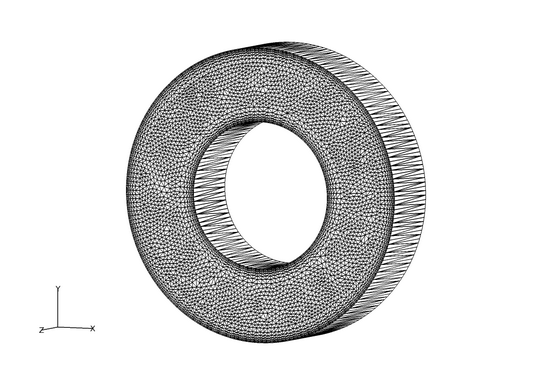
Figure 2. Mesh used for Simulating Viscous Heating Inside a Rotating Annulus
AcuSolve Results
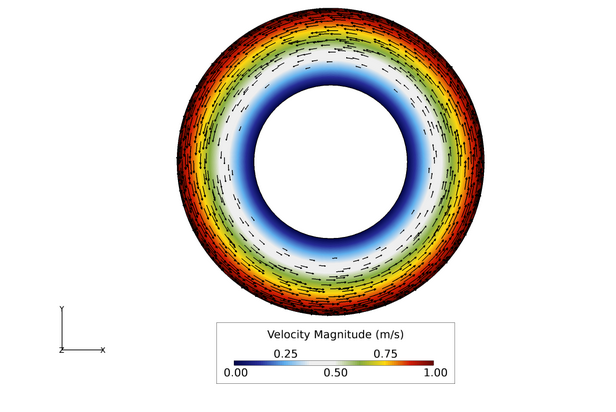
Figure 3. Contours of Velocity Magnitude and Velocity Vectors
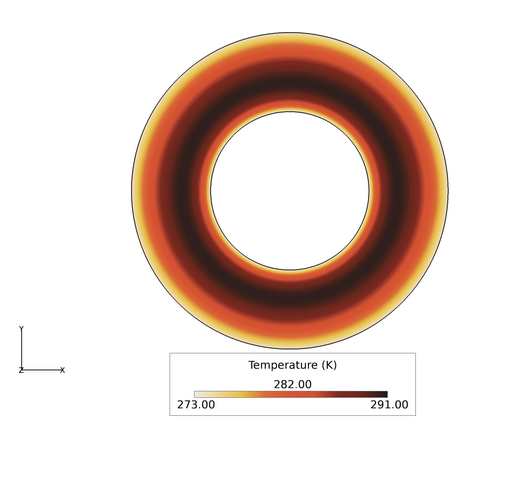
Figure 4. Contours of Temperature
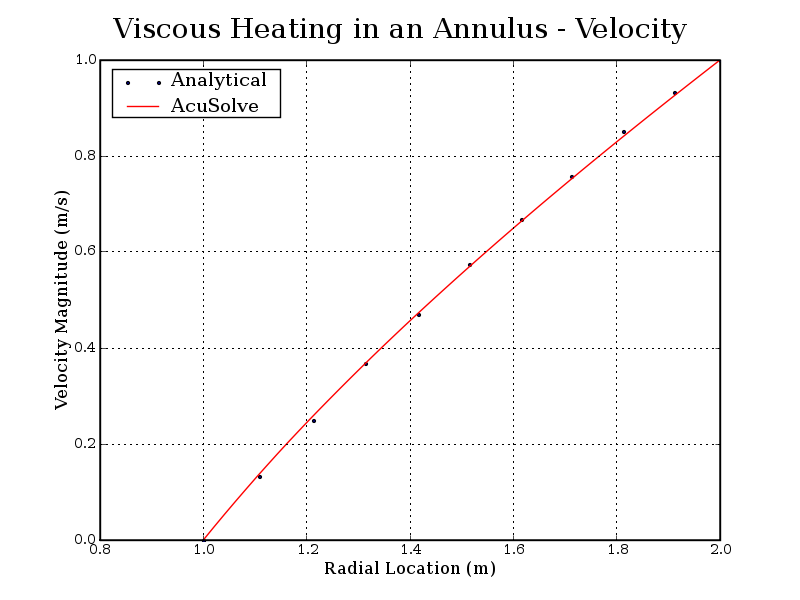
Figure 5. Velocity Magnitude Plotted Against Radial Location from the Center of the Inner Cylinder
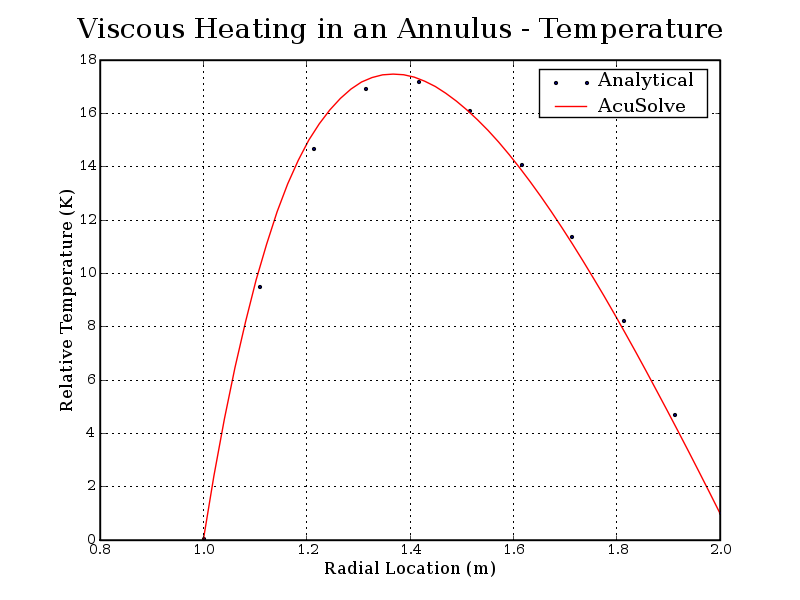
Figure 6. Temperature (Relative to the Inner Cylinder Wall Temperature) Plotted Against Radial Location from the Center of the Inner Pipe
Summary
The AcuSolve results compare well with the analytical results for both the flow field and the temperature across the annulus. In this application, flow is induced due to the viscous stresses generated by the rotation of the exterior cylinder. Velocity gradients between the cylinders give rise to shear stresses that induce frictional heating of the fluid. Due to the high viscosity of the fluid, the viscous heating is significant and leads to large increases in the temperature between the cylinders. This application validates the ability of AcuSolve to simulate flows where the viscous heating contribution is significant.
Simulation Settings for Viscous Heating Inside a Rotating Annulus
AcuConsole database file: <your working directory>\annulus_rotating_heat\annulus_rotating_heat.acs
Global
- Problem Description
- Analysis type - Steady State
- Temperature equation - Advective Diffusive
- Turbulence equation - Laminar
- Auto Solution Strategy
- Relaxation factor - 0.2
- Material Model
- Fluid
- Density - 1.0 kg/m3
- Viscosity - 300 kg/m-sec
- Conductivity - 1.0 W/m-K
- Fluid
- Reference Frame
- Outer_Rotation
- Angular Velocity
- X-component - 0.0 rad/sec
- Y-component - 0.0 rad/sec
- Z-component - 0.5 rad/sec
- Angular Velocity
Model
- Outer_Rotation
- Volumes
- Fluid
- Element Set
- Material model - Fluid
- Viscous heating - On
- Element Set
- Fluid
- Surfaces
- Inner_Cylinder
- Simple Boundary Condition
- Type - Wall
- Temperature BC type - Value
- Temperature - 273.0 K
- Simple Boundary Condition
- Outer_Cylinder
- Simple Boundary Condition
- Type - Wall
- Reference frame - Outer_Rotation
- Temperature BC type - Value
- Temperature - 274.0 K
- Simple Boundary Condition
- Symm_MaxZ
- Simple Boundary Condition
- Type - Symmetry
- Simple Boundary Condition
- Symm_MinZ
- Simple Boundary Condition
- Type - Symmetry
- Simple Boundary Condition
- Inner_Cylinder
- Nodes
- Node 1
- Pressure
- Type - Zero
- Pressure
- Node 1
References
R. B. Bird, W. E. Stewart, and E. N. Lightfoot. "Transport phenomena". New York, John Wiley and Sons, 1960